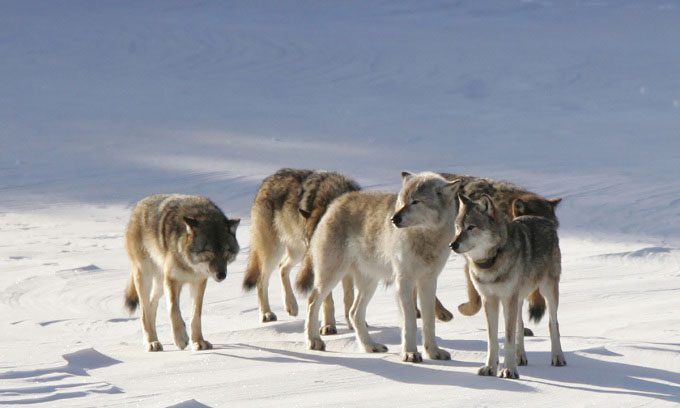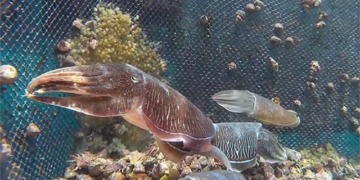Male Wolf M93 Gives Birth to 34 Offspring, Enhancing the Genetic Health of the Wolf Population on Royale Island and Increasing Successful Hunting Rates.
In 1997, a solitary “immigrant” wolf crossed the ice bridge connecting Canada to Royale Island in Lake Superior, North America. According to a study published in the journal Science Advances on August 23, its arrival helped restore the weakened wolf population on the island, which was suffering from disease and inbreeding, while also improving the health of the forest ecosystem.
“Issues such as inbreeding and low genetic diversity are major concerns in the scientific community. However, this is the first study to demonstrate that these genetic problems not only affect a specific population and increase extinction risk but also have significant impacts on all other species,” said Sarah Hoy, an ecologist at Michigan Technological University and a member of the research team.

Wolf M93 (the larger, lighter-colored one in front, near the center) with its pack. (Photo: John Vucetich/Michigan Technological University/AFP)
The first wolves arrived on Royale Island in the late 1940s, primarily preying on moose. By the 1980s, the emergence of the parvovirus in dogs caused the wolf population to plummet from 50 to about 12. Although the disease later disappeared, the wolf population did not immediately recover due to inbreeding, which led to low reproductive success and declining health.
M93 had no relatives among the old wolf population on the island. It was also unusually large—an advantage when defending territory or taking down moose weighing up to 400 kg. M93 quickly became the primary breeding male of one of the three wolf packs on the island. It gave birth to 34 offspring, significantly enhancing the genetic health of the population and the success rate of prey captures.
Moose are highly opportunistic herbivores, consuming up to 14 kg of vegetation daily. By reducing the moose population, wolves help restore the forest to a balanced state, particularly concerning Abies balsamea, a species of balsam fir. The decrease in moose numbers has allowed this tree species to thrive at unprecedented rates for decades. This is crucial for forest regeneration and for the countless species of flora and fauna that depend on the forest.
The benefits from M93’s presence lasted about a decade. After that, the situation worsened again due to its strong reproductive capacity. In 2008, two years after M93’s death, 60% of the wolf population’s genetic material was inherited from M93, causing genetic degradation to resurface. By 2015, only two wolves remained: a father and daughter, who were also half-siblings.
A restoration program that began in 2018 once again brought balance. Currently, the island has about 30 wolves and nearly 1,000 moose.
According to Hoy, a noteworthy point is that adding a small number of individuals can also apply to other endangered carnivore populations suffering from inbreeding, such as lions or cheetahs, to restore ecosystems similarly. William Ripple, an ecology professor at Oregon State University, stated that this is an important study, showing how genetic processes can limit the ecological impact of a keystone species like the gray wolf.


















































